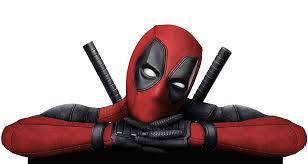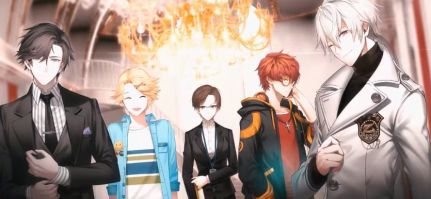
Featured Blog | This community-written post highlights the best of what the game industry has to offer. Read more like it on the Game Developer Blogs or learn how to Submit Your Own Blog Post
Welcome to the Magic Circle
The Magic circle is a magical world that players step into when entering the world of the game. However, it is also very misunderstood from a design perspective. This article looks at some misconceptions and new ways to design games with the magic circle.

The following is a reproduction, and has been modified for this site. The original article, and many others, can be found at RemptonGames.com

I love getting lost in a great book, film or TV show, but no matter how much I enjoy watching I never really feel like I am a part of the world. When I watch a film, I know that nothing I do is going to affect the outcome – my world and the world of the movie are separate. I can look into these other worlds, but I can never enter them.
When I play a game, however, I feel completely different. Games can draw you into themselves in a way that no other medium can – instead of just looking into a world you can actually enter it. You can interact with the other people inside that world, make decisions and change it how you wish. Whether you are questing as a vampire cleric, becoming leader of the wasteland, or building your Mediterranean trading empire, one of the fundamental aspects of games is that they allow you to truly experience something that you would never get the chance to experience in real life.
This aspect of games – the ability to draw you into a different reality, with it’s own rules and structures – is known as the Magic Circle. This concept describes the way that, when playing a game, things begin to take on a completely new meaning. In the real world you may simply be moving a few pieces of cardboard around, but in the Magic Circle you are actually building roads and a town. You may be a 32 year old Asian woman, but inside the Magic Circle you are an axe-wielding Orcish Warrior.
Today’s article is going to be an introduction to the Magic Circle as a game design tool. To do so I am going to look at the history of this concept, some common misconceptions about the Magic Circle, and finally how designers can expand, contract and build the Magic Circle for their players.
Legend of the Magic Circle
On the one hand, the idea of the Magic Circle may seem obvious, and the idea that games are somewhat removed from everyday life is not a new one. However, the Magic Circle as a formal idea in game design and game studies goes back to a Dutch writer known as Johan Huizinga.

Huizinga, shown here desperately needing a hug
Huizinga first used the term “Magic Circle” in his book Homo Ludens (1938),which talks about the fundamental role that play has played in the development of human society and is a seminal work in the field of game studies. However, the term was only used a few times in this book, and the Magic Circle concept that we know today was actually formalized by the book Rules of Play by Katie Salen and Eric Zimmerman in 2003.
In this book, Salen and Zimmerman specifically describe the Magic Circle as a separate world that players choose to enter while playing a game. However, while the Magic Circle literally describes a separate space where the game takes place, in reality it is really more of a mindset. When entering the Magic Circle players make a choice to play by the rules set out by the game designer and do things that they wouldn’t normally do for no reason other than it is part of the game.
Why do we need a Magic Circle? Because games, unlike most other things we do, are pretty arbitrary. When playing a game there is no necessity to any of the actions that you take, and there is really no particular reason why things have to be done a particular way. If you break a law you may be fined or imprisoned, but if you break the rules of a game there are generally no negative consequences (other than possibly having less fun). From the outside, the actions taken within a game may seem meaningless, but that is because without the Magic Circle they ARE meaningless.
For an example of the importance of the Magic Circle, look no further than the simple game Would you Rather. If played correctly, Would you Rather can actually be a very fun and thought-provoking game to play with friends. However, every once in a while there will be a player who refuses to simply accept the rules of the game. The conversation usually goes something like this:
Me: Would you Rather do Thing A or Thing B
Them: Uh….I don’t want to do either of those things. I choose neither.
Me: You have choose one, that’s the point of the game.
Them: But when would I ever have to pick between these things in real life?
Magic Circle Myths
While the Magic Circle has its own set of rules, contexts and meanings, this does not mean the the game world has no connection to the real world. On the contrary, in many ways the world of the game and the world of life tend to be very connected. Social connections may take on a different meaning within the world of the Magic Circle, but they do not disappear entirely, and even though a game may have it’s own unique rules this does not mean that rules of law, society and decency do not still apply.
Another common misconception with the Magic Circle is that it is the same thing as the Fourth Wall. While these concepts have some similarities, they are also very different. The fourth wall, for those who are unfamiliar, is a term used in movies, television, theater and books to refer to the “window” that the viewer uses to look at the world. I believe that the term comes from the theater, where actors perform on a stage with three sides but the fourth side is left open so that the audience can look in and see what is happening.
The difference between the Fourth Wall and the Magic Circle is subtle, but important. The Fourth Wall, while invisible, is also incredibly solid. Unlike the Magic Circle, the Fourth Wall separates people from the world that they are viewing instead of inviting them into it. Occasionally characters inside the fictional world may be able to “break” the Fourth Wall by acknowledging it’s existence or the presence of the audience, but no amount of Fourth Wall Breaking will actually remove the separation between the fictional and the real.

I can’t believe that THIS is the caption you decided to give me…
Unlike the Fourth Wall, the entire point of the Magic Circle is to draw the player into the world of the game. Instead of separating the fictional world and the real world, the Magic Circle binds them together so that, at least during the extent of the game, they are one and the same.
Designing with the Magic Circle
On a fundamental level, the Magic Circle is intrinsic to almost all of game design. Whether you are designing a Tabletop RPG, a complex worker placement game, or even an abstract strategy game, every game design tries to bring the gamer into it’s own world. However, keeping this concept in mind allows for a few interesting design opportunities.
The first and most basic technique is to try to maximize player immersion inside the Magic Circle. While there are many ways to draw people in, one of the best ways is through the game’s thematic elements, such as artwork and components. Players are more likely to accept the rules and actions proposed by the game if they can understand the reasoning behind the action, and the best way to do this is with a strong and integrated theme.
However, once you go beyond the basic idea of creating a Magic Circle for your players, that is where the possibilities begin to get really interesting. One such possibility is the idea of expanding the Magic Circle past it’s usual confines. While the Magic Circle usually only encompasses the places, characters and events within the game itself, it is possible to expand the Magic Circle to include more elements of the real world, thereby blurring the line between reality and the game.
One example of this is the mobile app Mystic Messenger. While I have not played this game myself, I do think that they make very interesting use of the Magic Circle concept. The game itself, as far as I can tell, is basically a Dating Simulator – you interact with a bunch of cute anime guys and try to woo them. However, while much of the game is done within the confines of the game itself, the game can also interact with the player through other means, such as by sending them real-world texts and emails.

Who is best boy? Let the flame war begin!
By bringing elements of real-world communication into the world of the game, this game effectively expands the Magic Circle to encompass more than just the app itself. This is different than Breaking the Fourth Wall because the game is not acknowledging the existence of the player as something separate from itself. Instead, it is treating the player and the real world itself as if it was all part of the game.
Much like the Magic Circle can be expanded, it can also be contracted. If expanding the Magic Circle involves connecting parts of the real world with the game, contracting the Magic Circle involves taking away things that are normally part of the game, such as the controller. If a character all of a sudden “decides” not to obey the controller and started moving by itself, for example, this would be a contraction of the Magic Circle which, instead of drawing the player in, effectively shuts them out. These types of contractions can be very shocking and jarring for the player, and can lead to very memorable gameplay experiences.
Until Next Week
That is all I have for this week! If you liked this look at the Magic Circle concept, please check out the rest of the blog and subscribe on Facebook, Twitter, or here on WordPress so you will always know when I post a new article. If you didn’t, let me know what I can do better in the comments down below. And join me next week when I look at board gaming’s great continental debate!
Read more about:
Featured BlogsAbout the Author(s)
You May Also Like







.jpeg?width=700&auto=webp&quality=80&disable=upscale)








